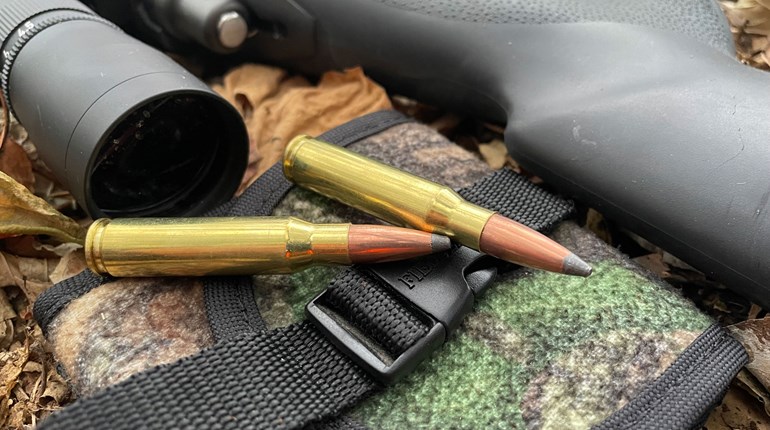
The Idaho hillside crumbled away under the toe of my boot as I scrambled after my mountain goat of a guide, always a vast number of long strides ahead of me up the mountainside. The dogs' cacophonous baying grew louder as we closed distance, though they were somewhat drowned out by the increasing tone of my labored breathing. Miraculously, though my legs ached, my heart pounded and my lungs burned, my feet were blessedly comfortable—almost unbelievably so. Even more shocking, this was only my second day in this particular pair of boots, yet they fit my feet as if they had been on there for years.

Why did I walk into camp with a set of brand new boots? Let me be clear, I would not recommend it. Boots should always be broken in long before chasing dogs and bears up steep mountainsides. That said, I am well aware that a solid proportion of folks will buy a set of boots, plan on taking a few break-in hikes, and still show up in camp with tags on. With that in mind, I decided to see exactly how the LaCrosse Ursa ES (GTX) would perform, right out of the box.

Features
The Ursa represents an interesting initiative by LaCrosse. Spanning four distinct models, LaCrosse has developed an Ursa for every season: the ES for early season hunts, MS for mid season, LS for late season and 400G for the most extreme winter weather (the latter two are still only available as pre-orders). I had packed in a set of Ursa ESes for this springtime bear hunt, convinced their nimble feature set was the right fit for the job. With no insulation, the boots tip the scales at right around 2.5 pounds per pair, which is extremely light for footwear this rugged. Fully waterproof while retaining breathability, a Gore-Tex liner keeps feet free of both rain and sweat no matter the terrain. A bi-fit board combines the shank, lasting board and midsole into a single piece, molding to the foot for an incredibly tailored fit. A four-way stretch collar is integrated with the tough 1000 Denier nylon and suede upper to help it move with the calf, without the stiffness traditionally associated with a taller boot. Moving downward, an EVA midsole cushions impacts absorbed through the rugged Vibram outsole. All in all, it's a well-thought-out boot, with very intentional design elements.

Field Test
Idaho may be my favorite testing ground for footwear. I've hunted and hiked a wide variety of states, terrains and even several continents (in addition to a previous life spent climbing and running up alpine ski racing hills), and it is my staunch belief that nowhere burns out a pair of boots or legs like Idaho. The mountains may not be the tallest around, but the sheer ruggedness of the country—undulating constantly underfoot from steep to steeper with nary a flat spot to be seen; the particular crumble of the shale, which saps power from every stride; and the sharp nature of the rocks once you've summited—make the terrain some of the most unforgiving in the world. Many boots won't even last a season here, and some of the best known names only barely squeak by with a full season of hard use.

All this played in the back of my head as I pounded up after the bear. A treed boar of decent size, I took the shot, dropped the animal and—once the rush of a successful hunt had subsided—suddenly began to worry that my test was over almost before it started. This was just day two, and we had struck very early in the day; combined with the previous day I only had, at best, five miles underfoot. Luckily, a hunt isn't over until everyone has filled their tag.

The next days saw me trek through mud, snow, dirt and rock gardens as I joined my fellow hunters in searching out their bears. While I won't go too far into detail here, as the adventure will be the topic of a forthcoming story in our print magazine, the excursions provided an excellent crucible for the boots, which maintained their traction and stability whether toting gear up and down steep terrain or clearing timber for our Can-Am. The pairing of their Megagrip Vibram outsole and flexible midsole meant the boots could grip where and when I needed it, while the four-way stretch collar allowed the articulation necessary to deal with any sort of obstruction or incline. In fact, at one point, the boots doubled as running shoes, as we were forced to run alongside baying dogs and bear for the better part of a mile in an effort to not lose them into inaccessible country. As we kept pace with the four-legged creatures, I was incredibly glad to have the nimble Ursa ESes on my feet, allowing me a speed and freedom of motion that would have been hard to come by in heavier, more restrictive hunting boots.

If the weather is warm and the terrain rugged, the Lacrosse Ursa ES makes for a perfect choice. It certainly was for this springtime bear hunt. For more information on these, or the entire Ursa lineup—available in regular or wide widths and sizes from 7 to 15—visit lacrossefootwear.com. MSRP: $250




































